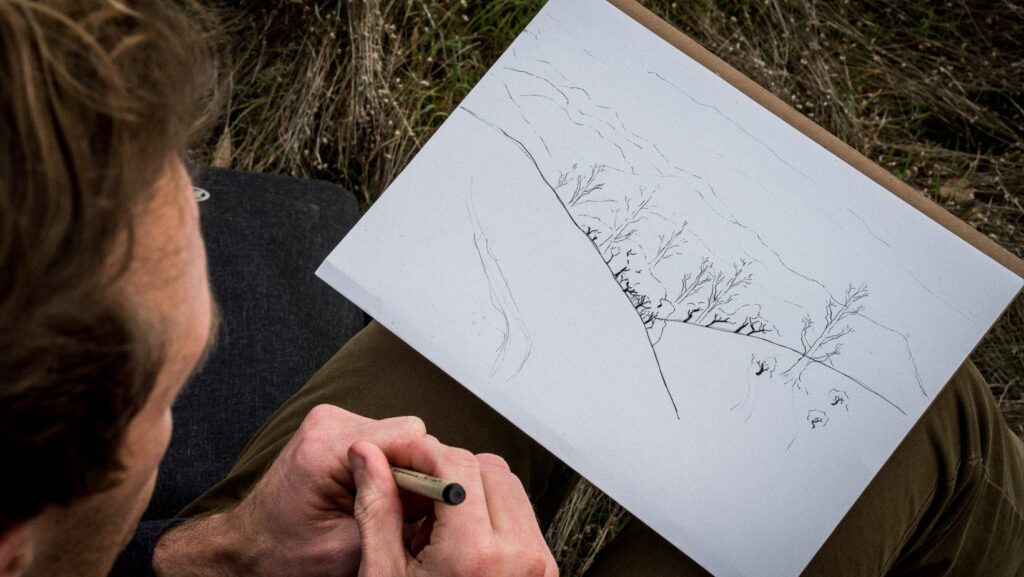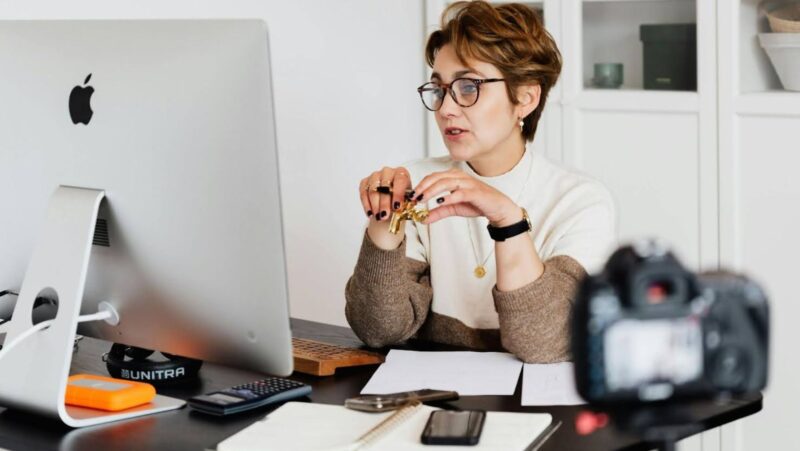
Drawing can feel intimidating at first, but it’s one of the most rewarding forms of self-expression I’ve ever encountered. Whether you’re a complete beginner or someone looking to refine your skills, understanding the basics can open up a world of creativity. I’ve found that with the right techniques and a bit of practice, anyone can learn how to draw.
Key Takeaways
- Drawing is Accessible: Anyone can learn to draw, regardless of skill level; understanding fundamental techniques is key to unlocking creativity.
- Core Techniques: Master observation, line work, shading, perspective, and proportions to build a solid foundation for your drawing skills.
- Regular Practice: Daily sketching, studying from life, and using reference images are essential strategies to enhance observation and refine technique.
- Utilize the Right Tools: Essential supplies like different hardness graphite pencils, erasers, sketchbooks, and blending tools significantly enhance the drawing process.
- Engage with Others: Participating in workshops and seeking feedback from peers can provide valuable insights that foster personal growth and artistic development.
- Experiment and Explore: Trying various drawing styles and techniques helps discover personal preferences, expanding creative horizons and improving overall skills.
Art:fkbna43hrgy= How to Draw
Drawing serves as a universal form of self-expression. Many perceive it as daunting, but the reality shows individuals across skill levels can master it. The essential techniques remain similar, whether an artist is a beginner or refining existing skills.
Key Techniques
- Observation: Observation aids in understanding shapes and proportions. Focus on subjects rather than merely capturing them.
- Line Work: Line work involves using various line types to convey strength and texture. Experiment with thin, thick, and varied lines to enhance visual interest.
- Shading: Shading adds depth and dimension to drawings. Practice blending techniques to create smooth transitions and realistic visuals.
- Perspective: Perspective creates a sense of space. Familiarize yourself with one-point and two-point perspectives for greater realism in compositions.
- Proportions: Proportions help maintain accuracy in figures and objects. Utilize techniques like the grid method for balanced representations.
Practice Strategies
- Daily Sketching: Daily sketching enhances muscle memory and observation skills. Set aside 15-30 minutes each day for practice.
- Referencing: Using references provides insight into various techniques and styles. Study works from established artists to gather inspiration.
- Workshops: Participating in workshops offers opportunities to learn from experienced instructors. Collaborating with peers fosters growth and creativity.
- Feedback: Receiving feedback encourages improvement. Share your work with others to gain different perspectives and constructive criticism.
- Pencils: Use graphite pencils varying in hardness for different effects.
- Erasers: Incorporate kneaded and vinyl erasers to refine drawings without damaging the paper.
- Sketchbooks: Keep a sketchbook for convenience, allowing for spontaneous drawing and experimentation.
- Reference Images: Collect reference images, which help in understanding forms and textures in greater detail.
By integrating these techniques, strategies, and tools, anyone can cultivate drawing skills effectively, transforming initial intimidation into a fulfilling journey of artistic expression.
Tools and Materials Needed
I focus on essential supplies and optional tools that enhance the drawing experience. These materials support both beginners and those looking to advance their skills.
Essential Drawing Supplies
- Graphite Pencils: I use a range from 2H to 6B for different line strengths. Harder pencils (H) produce fine lines, while softer pencils (B) create darker, richer strokes.
- Erasers: I keep both kneaded and vinyl erasers. Kneaded erasers lift graphite gently, while vinyl erasers clean up larger areas effectively.
- Sketchbooks: I prefer acid-free sketchbooks with a variety of paper types. Smooth paper works well for pencil, while textured paper accommodates charcoal and ink.
- Reference Images: I gather high-quality reference images to study proportions, anatomy, and perspectives closely. Online resources and photo libraries provide a wealth of examples.
- Charcoal: I incorporate charcoal for bold, expressive lines. Compressed sticks offer rich, deep tones, while vine charcoal gives softer gradations.
- Ink Pens: I explore line variation with fountain pens and brush pens. These pens add detail and contrast to my drawings.
- Blending Tools: I utilize stumps and chamois cloth for blending pencil and charcoal. These tools help create smooth transitions and softer edges.
- Colored Pencils: I sometimes work with colored pencils for additional depth and dimension. Layering colors adds vibrancy and interest to my artwork.
Step-by-Step Drawing Techniques
Art:fkbna43hrgy= how to draw build on a foundation of skills and practices. Understanding these methods supports my growth as an artist.
Basic Shapes and Forms
Basic shapes form the building blocks of any drawing. Circles, squares, and triangles serve as the groundwork for creating complex forms. I start by breaking down the subject into these simple geometric shapes. For example, a human figure can be simplified to cylinders for limbs and an oval for the head. Sketch these shapes lightly with a hard pencil, allowing for adjustments. This method ensures accurate proportions and helps visualize the overall structure before adding details.
Adding Details and Textures
Adding details and textures brings life to a drawing. Once I’ve established basic shapes, I refine outlines and begin to introduce specific features. I observe the subject closely, noting elements like shadows, highlights, and unique shapes. To create textures, I use techniques such as hatching, cross-hatching, and stippling with varying pencil pressures and angles. For instance, using closer lines creates the illusion of rough surfaces, while soft, longer strokes can depict smooth textures. This attention to detail enhances realism and depth, transforming basic shapes into a vivid representation of the subject.
Tips for Improving Your Drawing Skills
Improving drawing skills relies on consistent practice and constructive feedback. These methods help artists of all levels achieve noticeable progress.
Practice Methods
- Daily Sketching: Committing to daily sketching boosts observation and hand coordination. Even short sessions refine skills and build confidence.
- Study from Life: Capturing real-life subjects strengthens perception. Whether using still life or figure drawing, focusing on live observations sharpens accuracy.
- Use Reference Images: Gathering high-quality reference images provides insight into various shapes, colors, and textures. This practice allows for more informed work.
- Explore Different Styles: Experimenting with various drawing styles expands creative horizons. Trying out styles such as realism, abstraction, or cartooning uncovers personal preferences.
- Join Workshops: Participating in workshops enhances knowledge through guided instruction. Interaction with instructors and peers fosters a supportive learning environment.
- Share Work: Sharing artwork with peers, mentors, or online communities invites diverse perspectives. Constructive criticism highlights strengths and identifies areas for improvement.
- Request Specific Feedback: Asking for targeted feedback—like composition, proportion, or technique—yields actionable insights. Focused critiques help refine specific skills.
- Analyze Critiques: Reflecting on received feedback assists in understanding common strengths and weaknesses. It’s essential to track progress over time.
- Engage in Critique Groups: Joining or forming critique groups allows for regular feedback exchange. This collaborative environment nurtures growth through shared experiences.
- Observe Others’ Feedback: Observing how others respond to feedback can offer valuable lessons. Learning to give and receive critique encourages artistic development.
Journey of Learning
Embracing the journey of art:fkbna43hrgy= how to draw can be incredibly rewarding. I’ve seen firsthand how practice and the right techniques can transform your skills and boost your confidence. It’s all about breaking down the process into manageable steps and enjoying the exploration of your creativity.
With the right tools and consistent practice, anyone can develop their artistic voice. Don’t hesitate to experiment with different styles and techniques. Remember that every sketch is a step forward in your artistic journey. So grab your pencils and start creating; your masterpiece is waiting to be drawn.












